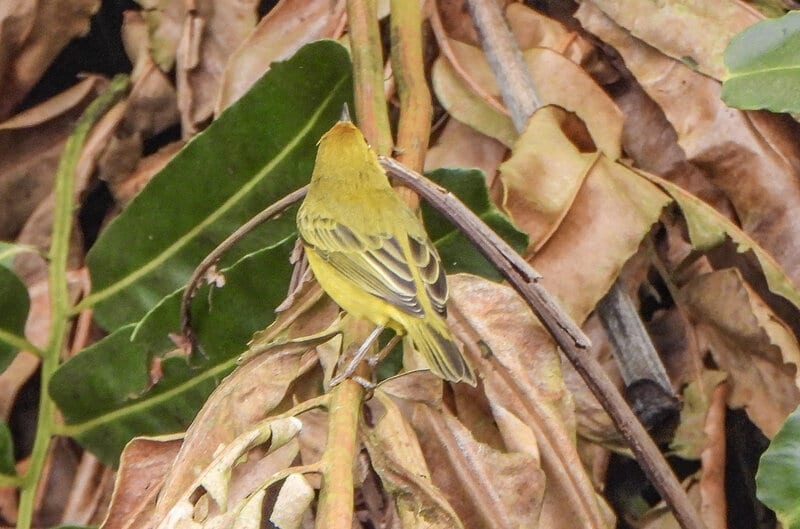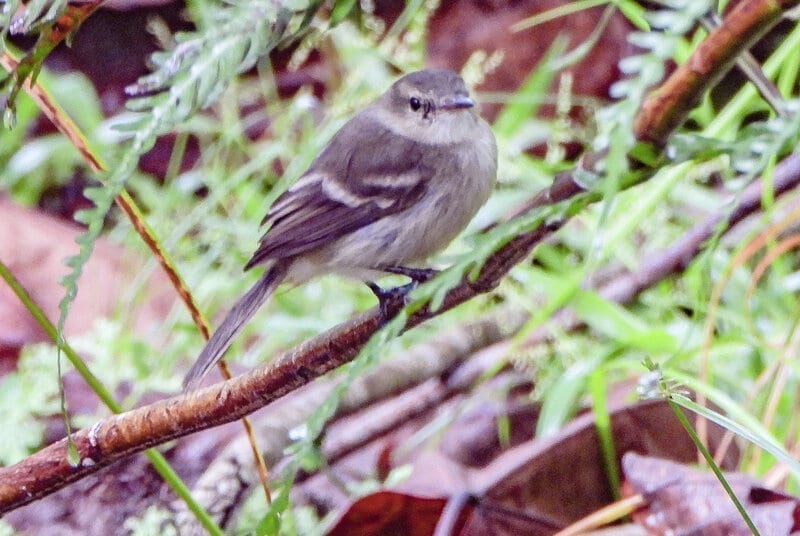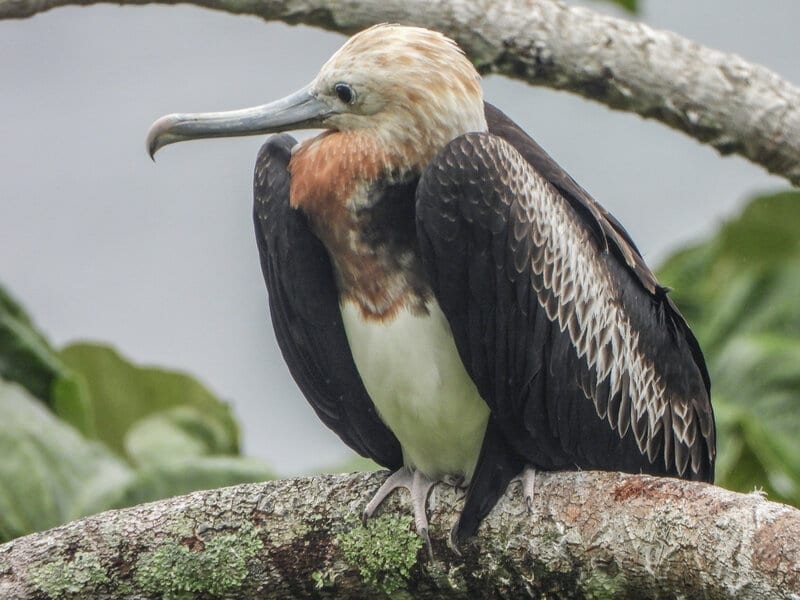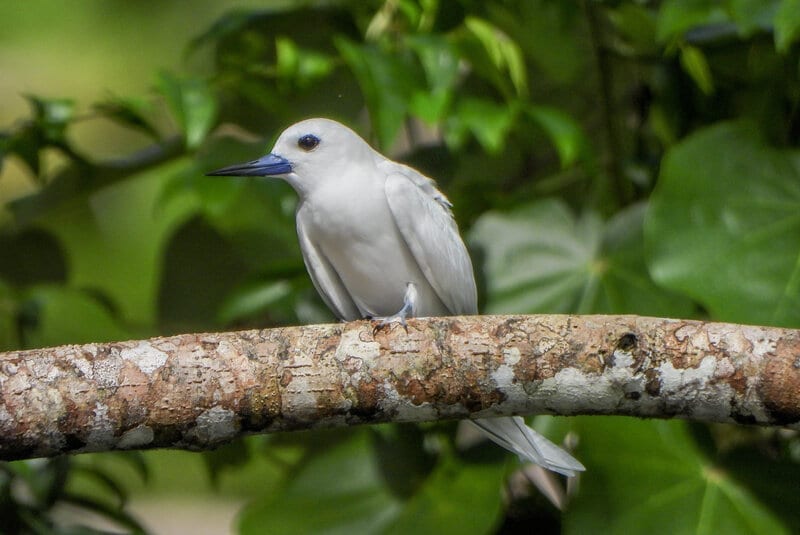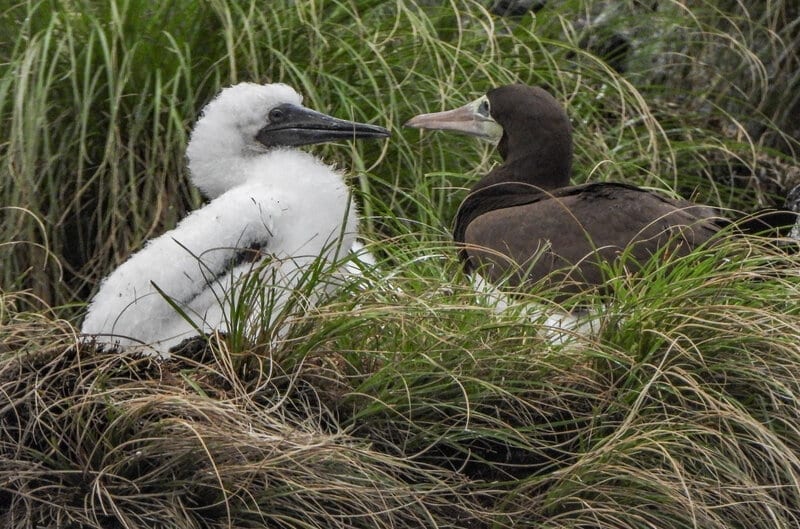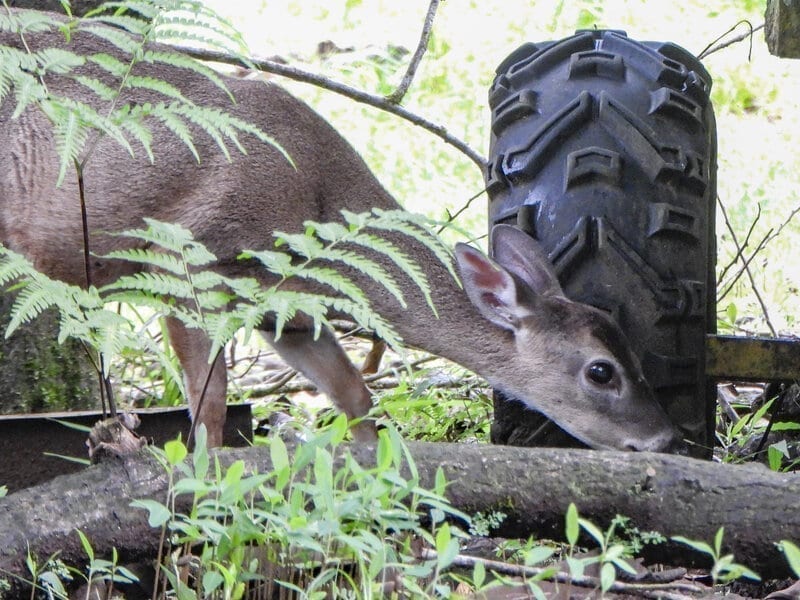Cocos a Bird and Wildlife Wonderland
Cocos a Bird and Wildlife Wonderland
As incredible as it sounded when we told friends about our Cocos Island trip plan, seeing sharks was not the main purpose.
Our most compelling reason for the excursion was to search for the four special birds found on the island. As much as I would love this to be a tale of how daunting our quest to find these birds turned out to be, it was nothing like that, but every bit as rewarding.
As in the Galapagos Islands, they are not afraid of man, these special birds of Isla del Coco are not afraid of humans and therefore incredibly easy to find.
First is the Cocos finch, an uninspiring little black bird (although the female is more colorful). It is one of the endemic birds of the island, found there and only there, and famous for its“Darwin finch” moniker.
Charles Darwin noticed differences between the finches on each of the Galapagos Islands, which strongly influenced his contention that environmental isolation was a driver for differences in evolutionary changes. Although the Cocos finch is among the birds he was studying, it is the only one Darwin never actually saw, since he never visited the Cocos Island.
Sitting in the trees near us at the abandoned park station at Chatham Bay, our initial landing point on the island, we spotted another endemic species in the special four group: the Cocos cuckoo. It, too, is way too easy to see.
Ecosystem imbalance
An unavoidable sight at Wafer Bay, among other spots on the island, are the roaming white-tailed deer and feral pigs. They, along with rats and feral cats, were introduced to the island over the centuries, all creating an imbalance to the ecosystem there, since there is no native mammal population. Any management or eradication efforts are thwarted by costs and animal activists.
With a large tidal beach area and a river entering, there were lots of coastal birds to see in our birding quest, and also our first views of the two other target species we were looking for.
The endemic Cocos flycatcher is another special, but unimpressive-looking bird. And one of the more interesting birds in terms of evolution is the Galapagos warbler.
The Galapagos warbler is, or was, a North American yellow warbler. About 1.5 million years ago, migrating warblers from North America decided to not go back, and started to diverge from their North American forefathers. Over the next million years, they have become different species in several different Caribbean islands and the Pacific coast. One species on Costa Rica’s mainland is now called the mangrove warbler. About 250,000 years ago, they split again into new species living on the Galapagos Islands and Cocos Island. These warblers may be the first North American expats!
The small islands surrounding Cocos Island are covered with a booby colony, filled with hundreds of brown, masked and nazca boobies with their adorable fuzzy chicks. These rock outcroppings off the coast of Cocos are one of the few places where you can see Nazca and masked boobies in the same place, distinguished by their yellow bill or orange bill. We also searched for the black noddy there, a bird much more at home in Australia and New Zealand.
While hiking the trail between Wafer Bay and Chatham Bay on Cocos Island, the forest is filled with roosting great frigatebirds, and red-footed boobies.
Learn more about the places mentioned above and our related adventures on Cocos Island in the following articles: <insert links>


